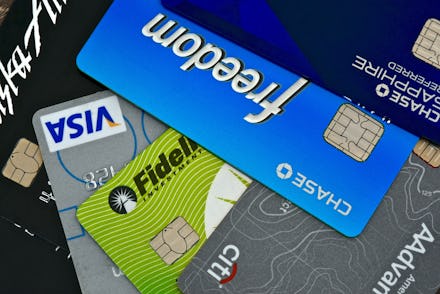Chase Sapphire Reserve cards are a viral millennial obsession. Here's why that's scary.

The new hotness in unboxing videos is neither beauty products nor Apple iPhones. It's ostensibly far more mundane: JP Morgan Chase's newest high-end credit card.
Dubbed the Chase Sapphire Reserve, the shiny card is far from cheap: It comes with a $450 annual fee and double-digit APR, which Chase justifies with a bevy of perks, including three points for every dollar spent on dining and travel, airport lounge memberships and more.
Those aristocratic extras are reified in the metal alloy construction of the literal heavyweight: "Chase has basically realized that the weight raises customers' dopamine levels," NerdWallet credit card expert Sean McQuay told Bloomberg.
Indeed, one unboxing video highlighting the Reserve's heft, clipped in GIF form below, had more than 10,000 views as of Friday morning.
Obviously, part of the card's appeal, to millennials especially, is its aura of exclusivity — and the thrill of the conspicuous consumption it encourages.
"Virtually nothing gives me more pleasure when I pay and the cashier notices how gorgeous that card is," McQuay told Bloomberg.
Looks aside, the card pays off best for big spenders with glittering credit: You need to drop more than $7,000 annually to get enough points to make it worth the fee — and you'll likely need a credit score of at least 680 to 700 to even qualify for the card.
A quick reality check?
The average millennial credit score is 625 — and most young people either lack an emergency fund (read: a financial lifeline in case of a job loss, car crash or worse) or have less than $1,000 saved in it. The median income for a 29-year-old is $35,000 a year.
In other words, the last thing most young people need is another incentive to spend instead of save.
And spend you must, if you really want to milk the Sapphire Reserve's perks.
To qualify for the 100,000-point signing bonus, more than double the sign-up bonus on comparable cards, you need to spend $4,000 on the card in the first three months. That median income figure above — $35,000 a year — amounts to less than $3,000 a month before taxes.
So to even qualify for the bonus, you'd have to charge at least 40% of your take-home pay on your credit card.
Still, that hasn't discouraged many points-lusting millennials, who Chase told Bloomberg already comprise a majority of the Reserve's applicants.
Remember, there's a reason credit card companies love rewarding you in "points": It's confusing as hell to figure out how much your points are really worth in dollar terms. One NerdWallet survey found that nearly 1 in 5 credit card consumers never even redeemed their rewards last year.
There's evidence that people spend more when abstract units of value are involved — a bias exploited by more than just credit card marketers: A Cornell University study found that when dollar signs are removed from a menu, diners spend "significantly more" on the food, likely because it creates psychological distance from the concept of money, reducing the "pain of paying."
Conversely, earning "three points for every dollar spent," sounds awesome — until you do the math and learn points are technically worth about 1.5 cents apiece.
To be fair, if your finances are in fantastic shape and you are already dropping enough on dining to maximize points — and traveling enough to take advantage of the $300 bonus — then sure, the Chase card may very well pay off.
For you, it might be an appropriate choice, or arguably even a frugal choice, but let's be real: It's a privileged one, too.
Because for most in the debt-ridden millennial generation, a credit card with 0% interest would be more appropriate — or one with more easily redeemed rewards, like cash back on necessities like gas or groceries.
For most, a card really should not be a fashionable accessory or a "part of your identity, like the clothes you wear," as the Points Guy's Brian Kelly described the growing trend to Bloomberg.
Unlike buying a trendy item of clothing — which, worse case, may simply may go out of fashion — using the wrong credit card the wrong way can have serious long-term consequences.